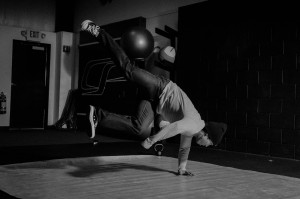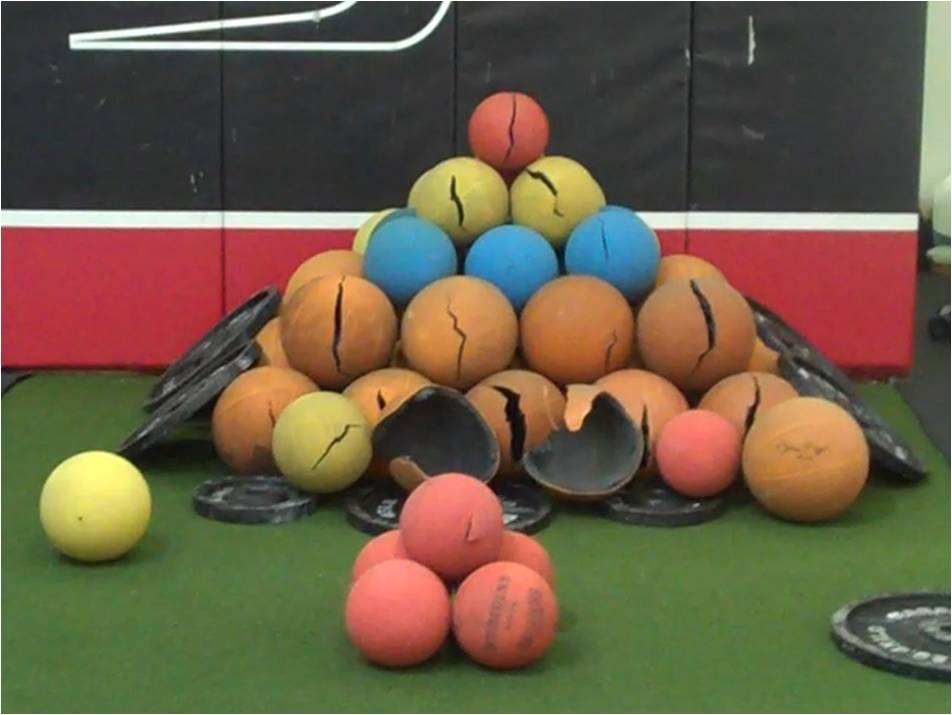In this series, I’m going to go over some of the basics with respect to how I progress medicine ball drills and how our youth athletes can best represent the idea of improving movement qualities of power and speed.
Many times our youth athletes will come in one of three ways: very coordinated, somewhat coordinated, and very uncoordinated.
This plays a role in not only our screening process at CSP, but also in what exercises are selected to help them display and express the physiological qualities of strength, speed, power, and endurance.
For example, If someone gets fatigued doing a specific type of drill, it can be expected that their ability to move around and perform that exercise for long durations of time will reduce in terms of efficiency over time. Long story short, their form will degrade as the exercise continues.
The energy requirements that require strength, speed, and power to be expressed in various movements are very different than the ones that are needed during endurance activities. So this brings to light a specific timeline or even window with which these youth athletes can perform exercises before fatiguing on a global level.
If they cannot maintain form for a movement pattern past the 60 to 90 minute mark, who is to say we need to keep on performing that exercise? What do you do instead?

What Do You Do When Someone Has No Coordination & is Quick to Fatigue?
Set them up for success – by any means necessary. Period.
Now let’s answer the question of how we go about doing this.
If someone can’t display strength, speed, or power from the get-go, what can we do differently to help them show off their power that is harnessed within their body?
One thing to understand is that if someone comes into our gym with a “very uncoordinated” body, then perhaps the position that they are normally in will not elicit the best expression of the desired qualities of strength, speed, power, and even endurance.
How can we bridge this gap between an uncoordinated individual with the tremendous source of energy that they might be able to display in their program?
I’ve always hung my hat on knowing when clients or athletes may not feel coordinated. Over time, you too will be able to sense a moment of hesitation before an explosive motion occurs in jumping, throwing, hopping. This subconscious self-doubt or self-talk displays itself in several micro-ticks within an individual’s behavior. Some call it the coach’s eye, and others will point to reduced force production on force plates or technology, Just Jump Mats, or less weight pulled on the barbell (than you know they are capable of).
Whatever the output is, it is best to identify which movements will elicit the highest outputs of force without detracting from the end goal.
Practical Application
One thing I can use to my advantage is to reduce the movement to its simplest movement patterns in order to progress or layer into the next drill – the end goal for the day. On a neurological level, sometimes standing and being explosive is too much work. Let’s make it easier – go to one knee or two knees, and ask them to be explosive in this manner.
Sometimes sprinting drills aren’t effective because the individual doesn’t understand the requisite movement patterns that are necessary to understand. Sometimes an individual doesn’t understand what it means to throw their whole body into a jump, or medicine ball drill, and there is force production left behind on the table.
Using drills such as a medicine ball medley or medicine ball warm-up will help bridge this gap between uncoordinated movement qualities and powerful slams and throws.
I not only find these drills to be effective for our youth athletes, but also as a great reinforcement of separation for our intermediate and advanced athletes. By locking down the lower half of the body, you can elicit a static base and foundation with which you can display great levels of rotary and sagittal explosive force, depending on the drill.
Coaching Cues
1. Make sure to stay tall through your torso – head up to the ceiling.
2. Brace with the ball in your hands, and give a slight exhale as you slam the ball.
3. Break the ball through the wall, and REACH with whatever position you are in (to encourage upper body separation from lower body).
4. Lastly, keep hips square to whichever position you originally started in.
—-
As always,
Keep it funky.


